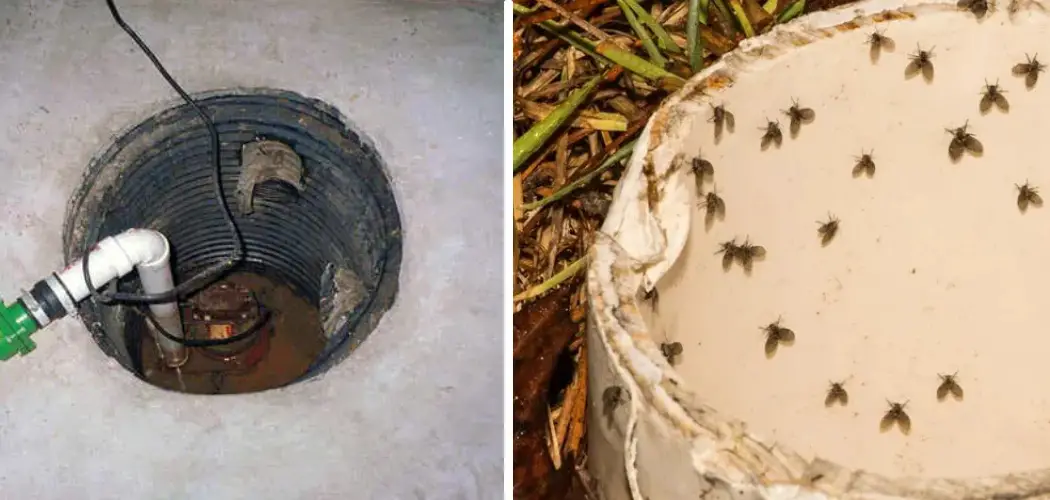Dealing with drain flies in your basement can be a frustrating and unpleasant experience. These tiny pests, also known as sewer flies or moth flies, are often found near drains and sewage systems, making them a common nuisance in basements.
Not only do they create an unsightly and unhygienic environment, but they can also multiply rapidly if not addressed promptly. If you’re struggling with drain flies in your basement, worry not. In this article, we will provide you with effective methods and strategies on how to get rid of drain flies in basement.
From identifying the source of the infestation to implementing preventive measures and utilizing natural remedies or professional treatments, we will guide you through the process of eliminating drain flies and restoring a clean and pest-free basement environment.
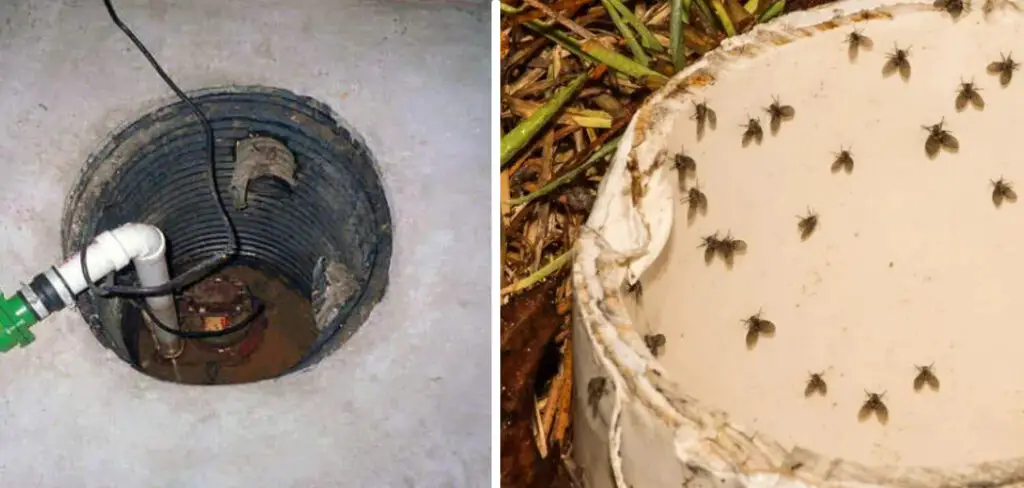
Understanding the Nuisance of Drain Flies in Your Basement
Drain flies, also known as sewer flies or filter fly, are small insects that can become a nuisance in basements. They often live near the drains of showers and sinks and feed on organic matter found there such as soap scum and hair. The adult drain fly is greyish-black with long hairs covering its body. It is usually about 1/8 to ¼ inch in size with two bright yellow stripes on its head.
A large infestation of drain flies can be annoying, leading to itchy bites from their larvae or an unpleasant odor coming from the clogged drain they inhabit. Moreover, due to their affinity for moist environments, having them in your basement may indicate a more serious problem like water damage or leaky pipes.
Though the presence of drain flies can be concerning, it is possible to get rid of them without resorting to chemical-based pest control methods. The most effective way to eliminate a drain fly infestation in your basement is through careful cleaning and maintenance. Additionally, there are several natural substances that can be used to deter and kill them.
In conclusion, drain flies in the basement can indicate a more serious issue like water damage and should not be taken lightly. Fortunately, with proper cleaning and maintenance as well as natural remedies, it is possible to get rid of them without using chemical-based pest control products. With some time and effort, you can successfully eradicate the drain fly problem from your basement and enjoy a fresh living environment again.
The Potential Health Risks Associated with Drain Fly Infestations
As previously mentioned, drain flies can carry a wide variety of bacteria and other pathogens. An infestation in your basement could cause or exacerbate various conditions such as respiratory illnesses, skin rashes, allergies and asthma. If you have pets or small children living in the house, they are at even greater risk of being affected by these health risks.
It is therefore essential that you take steps to get rid of drain flies as soon as possible. In addition to the potential health risks associated with an infestation, having drain flies buzzing around your basement can be very unpleasant and distracting.
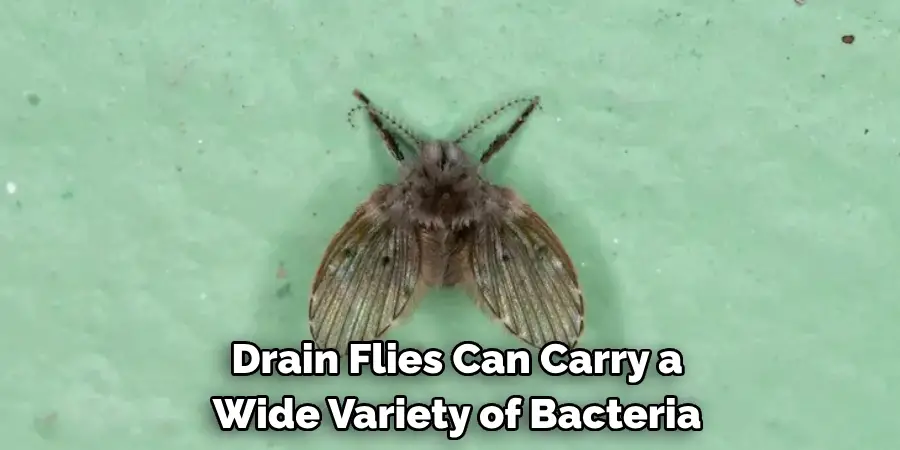
If you have noticed a large number of these insects in your basement or any other area of your home, it is important that you take action quickly. The sooner you take measures to get rid of the drain flies, the better. There are a few simple steps that you can follow in order to effectively eliminate them from your home and restore your peace of mind.
One of the most important things to do is to inspect any drains or pipes in your basement for standing water, organic debris, and other signs of moisture. If you notice any of these issues, it is essential that they be addressed immediately.
Drain flies need moisture and food sources in order to breed and survive, so eliminating these sources is key to getting rid of them quickly. Additionally, regularly cleaning out wet wipes and hair traps should also help to reduce the number of drain flies present in your basement as well as prevent future infestations.
Characteristics and Appearance of Drain Flies
Drain flies, otherwise known as sewer gnats or drain moths, are small insects that live in moist areas like sewers and drains. They have wings and long antennae which typically measure between 3-5mm in size. Drain flies come in several different colors including brown, white, yellow and black. Their bodies are covered with tiny hairs, and they have round eyes that can be seen when viewed up close.
The most noticeable trait of drain flies is their extremely quick flight pattern. When disturbed, they will rapidly flit around a room before settling again on the nearest surface. This rapid motion makes them difficult to catch or swat away by hand. Additionally, they often congregate near windows due to their attraction to light.
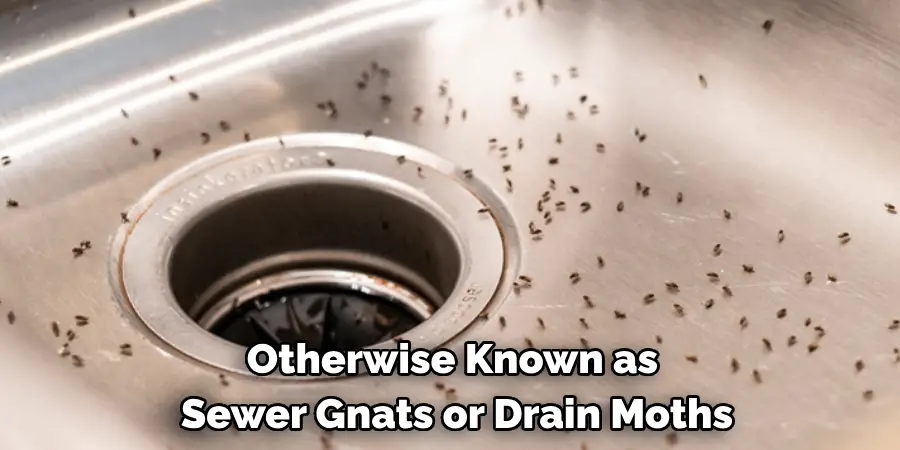
Drain flies are prolific breeders and can lay up to 200 eggs at a time. The eggs hatch in as little as 24 hours and become adults within two weeks, allowing the population to quickly grow out of control if left unchecked. This quick reproduction cycle means that drain fly populations need to be taken care of immediately for successful eradication.
Fortunately, there are steps you can take to get rid of drain flies in your basement or elsewhere around your home. With diligent and persistent effort, you can eliminate these pesky pests from your living space once and for all!
10 Methods How to Get Rid of Drain Flies in Basement
Identify the Source of Infestation:
The first step in combating drain flies is to identify the source of the infestation. Inspect your basement thoroughly to locate areas of standing water, clogged drains, or organic matter accumulation, as these are prime breeding grounds for drain flies.
Remove Standing Water:
Drain flies thrive in moist environments, so eliminating any standing water in your basement is crucial. Address any leaks, fix plumbing issues, and ensure proper drainage to prevent water accumulation. Consider using a dehumidifier to reduce excess moisture in the air.
Clean and Unclog Drains:
Thoroughly clean and unclog all drains in your basement. Use a drain brush or a plumbing snake to remove any debris or organic matter that may be attracting drain flies. Rinse the drains with hot water and a mild detergent to remove any remaining residue.
Employ Biological Drain Cleaners:
Biological drain cleaners containing bacteria or enzymes can help break down organic matter and reduce the buildup of scum and slime in drains. Follow the instructions on the cleaner to ensure safe and effective usage.
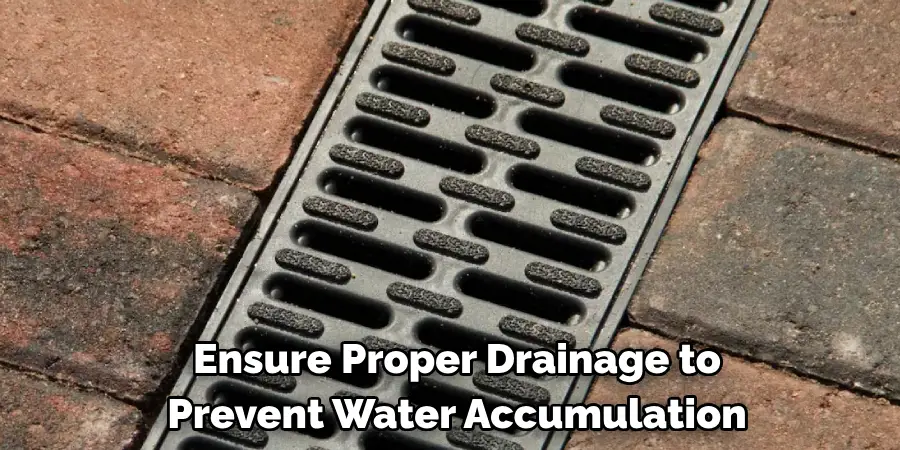
Use Boiling Water and Vinegar:
A mixture of boiling water and vinegar can be an effective natural remedy to kill drain flies and clear out debris. Pour a pot of boiling water down the drain followed by a cup of vinegar. Allow it to sit for a few hours or overnight, and then flush the drain with hot water. The vinegar helps to break down any organic matter that may be clogging the drain.
Create DIY Traps:
Set up DIY traps to capture adult drain flies. Fill a shallow dish or bowl with apple cider vinegar, a few drops of dish soap, and a plastic wrap tightly secured with small holes poked in it. The flies will be attracted to the scent, enter the dish, and get trapped in the soapy liquid. Alternatively, you can also set up yellow sticky traps to capture the flies.
Implement Sticky Traps:
Place sticky traps near drains or areas where drain flies are frequently seen. These adhesive traps, available in stores or online, will catch adult flies as they land on the sticky surface, helping to reduce the population over time. Place the traps where they won’t be seen, such as on the underside of furniture or underneath your basement stairs.
Install Drain Covers or Screens:
Prevent drain flies from entering your basement by installing drain covers or screens. These physical barriers allow water to flow while keeping flies from passing through. Regularly clean and inspect the covers to ensure they remain effective.
Consult with Pest Control Professionals:
If the infestation persists or becomes severe, it may be necessary to seek professional assistance from a pest control service. Experienced exterminators can conduct a thorough assessment of the situation, identify underlying issues, and employ targeted treatments to eliminate drain flies effectively and safely.

Practice Ongoing Preventive Measures:
To prevent future infestations, establish good sanitation and maintenance practices in your basement. Clean drains regularly, fix leaks promptly, dispose of organic waste properly, and maintain proper ventilation to reduce humidity levels. Regularly inspect your basement for signs of drain flies and take preventive measures to minimize conditions that are conducive to their breeding.
Conclusion
All in all, getting rid of drain flies in the basement is a task that needs time and effort. But when done right, it can be an effective way to ensure the pests stay away for good. Cleaning and treating all the affected areas is key, as well as regularly cleaning up messes and keeping windows and doors sealed.
After these steps are taken, you may consider using chemical repellants or traps to ensure complete eradication of the pests. The best advice we can offer about how to get rid of drain flies in basement is never to neglect taking preventive measures: take control before the problem gets out of hand and discourage any more infestations!

